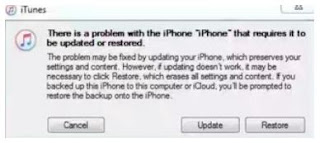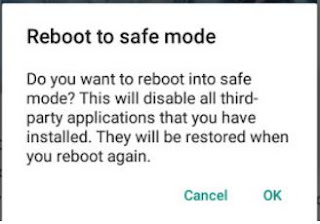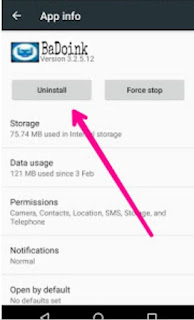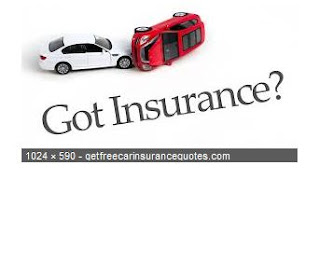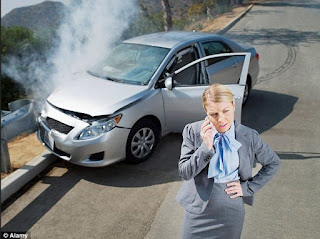See Five (5) Car Insurance Tips To Help You For Better Insurance
In the below article, we'll give you all of the helpful tips you need when getting car insurance.
1. Know Your Coverage Types
What is your car insurance actually insuring? Although you're buying a single insurance policy covering a specific vehicle, a number of components make up the final cost:
>> Bodily injury liability: Covers injury and death claims against you, and legal costs, if your car injures or kills someone.
>> Property damage liability: Covers claims for property that your car damages in an accident. Because liability coverage protects the other party, it is required in all but three states.
>> Medical payments: Pays for injuries to yourself and to occupants of your car. This is optional in some states. In "no-fault" states, personal injury protection replaces medical payments as part of the basic coverage.
>> Uninsured motorist protection: Covers injuries caused to you or the occupants of your car by uninsured or hit-and-run drivers. "Under-insured" coverage also is available, to cover claims you may make against a driver who has inadequate insurance. In some states, as many as 30 percent of drivers are uninsured.
>> Collision coverage: Covers damage to your car up to its book value. Collision coverage carries a deductible, which is the amount per claim you have to pay before the insurance takes effect. The lower the deductible, the higher the premium. While it is legally optional, a lending institution or leasing company usually requires collision coverage.
>> Comprehensive (physical damage): Covers damage to your car from theft, vandalism, fire, wind, flood, and other non-accident causes. Comprehensive also carries a deductible.
2. Your Vehicle Affects Your Premium
You might want a sports car or a fancy SUV, but your insurance company may charge you more to protect you while driving it.
Insurance premiums are based partly on the price of the vehicle, which affects the replacement cost if it is stolen or "totaled" in an accident. How expensive the vehicle is to repair -- including parts and labor -- can also affect the cost. In addition, surcharges may apply to vehicles that are frequently stolen or involved in accidents.
Industry-wide information on injury claims, collision repair costs, and theft rates by vehicle model is available from the Highway Loss Data Institute (HLDI). You can write them at 1005 North Glebe Road, Arlington, VA 22201. HLDI is affiliated with the Insurance Institute for Highway Safety (IIHS).
According to HLDI, the lowest injury claims are from large vehicles -- cars, pickup trucks, and sport-utility vehicles. Small 2- and 4-door cars have the highest injury claims. Small cars also are among the highest in collision costs, along with sports cars.
If you have your heart set on a sporty vehicle, you'll probably pay dearly. Insuring a high-performance car can easily cost two or three times the insurance amount for an ordinary model.
Sport-utility vehicles, the hottest market segment, often have higher insurance rates than mid- and full-size cars, but some SUV models are relatively cheap to insure. SUVs are "hot" for other reasons: They are among the most frequently stolen vehicles, and they are more expensive than most cars. Cadillac's Escalade is currently the most popular model sought by thieves, but it's followed by the Nissan Maxima sedan. SUVs also can cost more to fix after an accident if the 4-wheel-drive system is damaged.
However, insurance companies set rates based on their own experience. If Company A has more collision and theft claims for a particular vehicle than Company B, then A will charge more for the same coverage. It all boils down to a company's actual experience with a particular vehicle or category of drivers. That is why it pays to shop around for insurance.
3. Who You Are Affects Your Premium
Factors that you can least control may have the greatest impact on your insurance costs. Your age, gender, and driving record are key factors that affect your insurance premium.
Single males under the age of 25 pay the highest rates. Statistics show they are involved in the most accidents, so insurance companies charge young men higher premiums than women of the same age. Married men, who statistically have fewer accidents, pay less than single men. A handful of states do not allow rates based on sex or age, but that prohibition has tended to result in higher rates for women, not lower rates for men.
If you are convicted of moving traffic violations or of causing an accident, your premiums will likely go up, no matter what your age. Drivers with clean records -- no tickets, no accidents -- pay the lowest rates.
Where you live also plays a big role in how much you pay. Urban areas, with their greater population densities and heavier traffic, get higher rates than rural areas. According to the Insurance Information Institute, the average insurance expenditure in mainly urban New Jersey -- traditionally the most expensive state -- in 2002 was more than double that of North Dakota, a rural state with the lowest average premiums. High costs in states such as Florida, Massachusetts and New York are attributed to growth in fraud and theft.
In most states, too, insurers set rates by zip codes. If you live in a major city like Chicago or Los Angeles, you will probably pay more than if you lived in a nearby suburb.
4. Decide How Much Coverage You Need
While it is dangerous to be underinsured, having too much insurance can be an expensive mistake as well. Without insurance, your property is put at risk in an accident that is your fault. The minimum amount of insurance required in your state is seldom enough.
State law may require as little liability coverage as $15,000 per person, $30,000 per accident, and $5000 property damage. About half of the states require $25,000 per person and $50,000 per accident. Half of them require $10,000 in property damage coverage. If you can afford it, buy more than the minimum. After all, $10,000 for property damage may not be enough if you hit a $100,000 Mercedes-Benz.
The more assets and income you have, the more insurance you need. Most insurers recommend liability coverage of at least $100,000 per person, $300,000 per accident, and $50,000 property damage if you have assets to protect, such as a house. Some insurers also recommend a $1 million "personal liability umbrella" policy issued in conjunction with homeowner's coverage. State Farm reports that such coverage averages $270 a year, but the amount varies significantly depending on location and other factors. An "umbrella" policy could protect a family from financial ruin in a major lawsuit.
Like buying a car, there is no single best solution when it comes to buying insurance. Rates vary widely. Surveys suggest that you could pay anywhere from $500 to $2000 annually for the same coverage from different companies. Shop for insurance by consulting two or three of the largest insurers, such as State Farm and Allstate. Then, contact one or two independent agents who can quote premiums from more than one company. In addition, there are direct-marketing companies, such as GEICO and Progressive, which do business over the phone rather than through agents and offer some of the lowest rates. Ask for an itemized list of coverages and costs.
"We're price-competitive," said spokesperson Dick Luedke of State Farm, whose rates dropped somewhat during 2004. But with so many factors involved in setting rates, it's wise to check several prospects.
In 2004, the average price of auto insurance nationwide was $871, according to the Insurance Information Institute. They expected that the cost of auto insurance would rise by 3.5 percent in 2004, which would be the smallest increase in four years.
Don't forget the Internet. Many companies now offer online quotes, and insurance shopping on the Web allows you to compare rates from multiple providers in the comfort of your own home.
5. You Can Reduce Your Premiums
The biggest difference you can make is to buy a vehicle that qualifies for a discount or at least doesn't carry a surcharge. Ask your insurance agent about the cost of insuring vehicles you are interested in before you make your purchase decision. Here are several other ways that you can save money on your car insurance:
>> Most companies give a break to those who drive less than 7500 miles a year. If you take public transportation instead of driving to work, your premium will go down. Out of the question? Try carpooling.
>> Make sure you get all the discounts you are entitled to. You might qualify if your vehicle has an alarm, for example. Discounts used to be given for such safety features as airbags, but they're fading away as those items become more commonplace. Discounts might also be available if you insure your vehicles and your home with the same company. People who pass a defensive-driving course or don't smoke or drink often get discounts.
>> Review the status of all the drivers in your family with your agent. Most discounts apply only to one portion of the policy, so don't expect dramatic savings.
>> Increase your deductible for collision and comprehensive. Switching from a $100 deductible to $1000 can reduce the collision portion of your premium by 30 percent, said Luedke. You'll still be covered for catastrophes, but you foot the bill for fender-benders. Also, think twice about filing small claims with your insurance: Why risk a premium increase?
>> Shop around. Instead of just renewing, study the fine print of your policy to see if its terms -- or your situation -- have changed. Another company might have better rates, but you won't know unless you shop. Most insurers give rates over the phone and many via online computer services, making it easy to compare premiums.
>> Drop collision coverage on older cars. Claims are limited to "book" value, so you're not likely to get much anyway if you car is more than seven years old. A good rule of thumb is to drop collision when the annual premium reaches 10 percent of your car's value.
>> Be a good driver. Avoid accidents and traffic violations and you will be rewarded with good-driver discounts. Bad driving is expensive. The "safer you can be" on the road, Luedke said, "the lower your premiums."
>> Drop coverage for such extras as towing costs or the expense of renting a car while yours is in the shop. The savings are probably small, but your new-car warranty's roadside assistance provision may provide them at no cost.
>> Have your teenager share the family car instead of owning his or her own. Be sure to tell your agent if your son or daughter makes the honor roll or moves away to college. Both qualify for discounts with most companies.
>> If your group health insurance provides generous coverage, consider dropping the medical-payments portion of your policy.
>> Keep your credit rating healthy. A growing number of insurers are considering a person's credit score when setting rates.






![New Android 8 Oreo Vs Android 7 Nougat [Review]](https://blogger.googleusercontent.com/img/b/R29vZ2xl/AVvXsEimPcz3-Ql6App5nEMClSUa39lsPSEWraEo54OXGC1yrrVD2QqM0LPNlSWubFtrDOPF9qCR2ZgroNR70LUXmtUuOJfqkY-Xo9ZKcwJQBo0hvDHUIpq_5bmeyf_GnF8aHv3kFxl1yhWgxwo/s1600/android+8.0.JPG)










